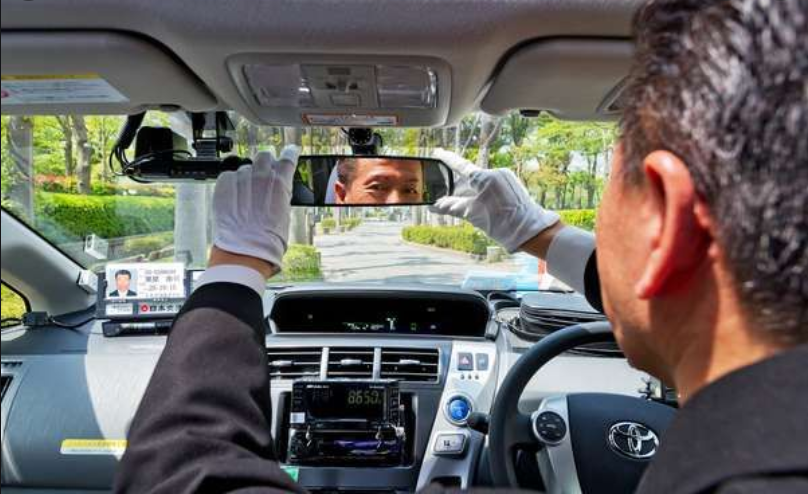
The hideous reality of the coronavirus has exposed the hideous realities of the mobility industry with sobering implications for all. At its core, mobility is about moving people in the safest, most efficient, and cost effective ways and suddenly citizens around the world are being told to stop moving and stop congregating.
Ride hailing operators Uber and Lyft have suspended carpooling. Uber also offered drivers suffering symptoms two weeks of paid leave. Both moves reflected the fig leaf-flinging efforts of governments to forestall the pandemic’s spread and mitigate its impact.
The transportation proposition of an app-based taxi ride delivered by an itinerant non-employee driver has finally fully been exposed for all its frailty. There is no protection for driver or passenger in a pandemic. There is no commitment to a particular level of service or safety. There never was.
Uber took the further step of suspending fees for food delivery and Lyft stopped hiring drivers in order to preserve what little demand was left for current drivers. But whatever they may announce, these profit-less operators are looking more precarious than ever.
The onset of COVID-19, though, has called into question the appropriateness of getting into any car that isn’t your own with someone you don’t know – either a driver or a driver and another passenger. This has further called into doubt the wisdom of public transportation itself and the hygiene associated with flying in airplanes or checking into hotel rooms.
The impact has been immediate and will have both long and short-term consequences. For the travel industry as a whole, the onset of the COVID-19 pandemic has been stunning as hotels are closing while local governments consider requisitioning them for hospital space.
Airlines in the U.S. are seeking government bailouts while Italy prepares to nationalize Alitalia – and France considers similar measures for Air France. Rental car companies, dependent as many are on airport traffic, have looked on helpless as business has evaporated.
The underlying goal of most mobility operators as well as regulators, legislators, and transportation authorities for the past five years has been to increase the number of passengers in both public and private conveyances to reduce congestion and emissions. With economic activity grinding to a halt there is now no congestion and satellite photography has shown us all that emissions are suddenly less of a problem globally – but especially in hard hit areas. The skies are clearing.
It’s hard to find such nuggets of good news in the morass of misery unfolding around the world. Multiple tolling agencies have closed or gone virtual suspending toll collections or shifting immediately to electronic tolling. And the price of gasoline is plunging along with everything else – so that’s good news, right?
Public transit agencies have been especially hard hit – confronted as they are with the need to maintain operations while simultaneously seeking to discourage crowding. This has resulted in service cutbacks and contradictory efforts to limit the use of transportation services to medical or personal necessity – suggesting that public transportation will primarily be transporting sick people. That, alone, should serve as a sufficient deterrent to crowds on the platforms and at bus stops.
Car sharing, ride hailing, and taxi operators have begun disinfecting their vehicles between rides – and even used car sales operations have begun offering disinfection as a service. The final nail in the transportation coffin has been the widening stoppage of vehicle production – as was seen in China two months before (where manufacturers have recently begun ramping back up).
With public transportation winding down, micromobility has taken on greater appeal, which is likely to cause municipalities to reconsider their limitations on shared scooters and bikes. For automotive-centric operators the challenge remains one of disinfecting and distancing where possible – but the stress of a multiple-month shutdown may be challenging for taxi and rental car companies.
Car sharing and ride hailing operators with significant leverage are likely to see their prospects for profitable operation or even survival severely tested. Consolidation among taxi operators seems inevitable. Uber may see it fit to sell off its India operations to Ola – both companies are Softbank investments.
The concept of autonomy in the form of robotaxis has its appeal – but not in the context of a shared space with no provision for cleaning and disinfecting the vehicle between rides. We humans are good for something, after all. We’ll be thinking a little differently about sharing rides in the future.
Car makers are still advertising new car sales, but many new car dealers around the world have suspended operations. These developments highlight the behavioral sacrifices and compromises we normally routinely make to move en masse to work and play. In a few months we will be asking ourselves to rekindle those damaged instincts and rejoin the literal human race – the herd – to get where we need to go.
Things will look the same, but they will never be the same. There will be more gloves and more masks and, maybe, more politeness. Let’s try to remember what this period right now is like when, a year from now, we are once again getting into a dodgy looking taxi or crammed into a subway or tram.
With a little luck and foresight these public transportation spaces may be a little cleaner as operators embrace the heightened expectation for disinfection and safety. We really should have been paying attention to these issues all along. Who can forget their first visit to Tokyo and the gloved handed taxi drivers with their cars with self-opening and closing doors. I’m looking forward to that future while I hunker down to ride out the pandemic.
Share this post via:







Flynn Was Right: How a 2003 Warning Foretold Today’s Architectural Pivot